Chapter IV: Pasadena
Patience is the companion of wisdom.
– St. Augustine
Starting a New Life 1937-1940
Our mother took John and me to Pasadena, California to escape the depredations of the Japanese in China. My father and two older brothers, George (whom we called Kemp) and Albert, stayed in China throughout most of the war. But those are other stories. We took an apartment on Hill Avenue near Colorado Boulevard and just a few blocks away from Caltech.
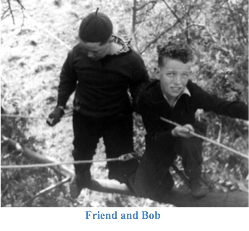
Once on the way home from school, I was accosted by a class bully and a couple of his buddies. They decided to have some fun, so they pushed me around and finally forced me to the ground. One of them found a red ant and pushed it against my arm, whereupon it stung me – yikes! I got over it soon enough, but I’ve always been impressed by that incident in the fact that he knew about ants and that ants could really inflict a lot of pain on an individual so hugely larger than itself. To this day I have great respect for red ants, several colonies of which we have in our New Mexico yard.
Fire and Smoke
My proclivities towards getting into trouble seemed to have followed me across the water, however. There was a small building in the rear of our apartment house that contained an incinerator where everyone put his burnable trash. On this particular day, while I was playing in the area, I noticed that the incinerator was crammed full of paper and cardboard, so that it clearly needed to be ignited. I found a ‘strike-anywhere’ match and lit the contents. What ensued was far beyond my expectations – a huge fire, with flames shooting out of the chimney. I sneaked home and engaged myself in studious activities. Soon the sound of sirens was heard, and fire trucks came roaring up. I showed an unusually limited interest in all this excitement, which of course made my mother suspicious. It didn’t take long for her to extract a confession from me. I was much relieved when she acknowledged that what I thought would be punished as a severe crime was an act of innocence and ignorance. I was spared the rod. But then, Mom was a much more forgiving soul than my father who at that time, thank goodness, was some 4,000 miles away.
But speaking of fire and smoke, at the age of 10 while walking home from school one day, I ran into a small, animated cluster of classmates on a sidewalk corner. They had happened upon a pack of Avalon cigarettes that apparently had fallen from someone’s pocket. Dares were going around to see who would smoke one. Having had some experience since the age of 5 with my father’s cigarillos purloined from his office in our home in China, I casually said that it was no big deal to smoke a cigarette. Whereupon the challenge was on; I lit up and smoked one of the Avalons to much admiration among the group. Suddenly I was somebody! With rising notoriety and bravado, I volunteered to smoke another, sealing my elevated status among this crowd. On the way home, my head started doing strange things, and my stomach followed soon after. By the time I reached home my stomach was in my mouth. It didn’t take long for Mother once again to extract a confession and a promise not to smoke again until ‘I was old enough’ which turned out to be seventeen.
McKinley Elementary School
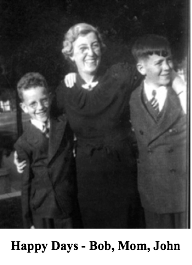
One day the teacher told us to get out a piece of paper and write a poem about China. I did mine on “The Tall Bamboo”, and when finished I raised my hand. She came over, picked up my paper, read it, turned to me and said sternly, “Where did you get this?!” Flustered and confused, I stammered that I had just composed it, but she insisted that this was a case of perjury, and that my mother would be informed. Well, after some phoning back and forth, the teacher was finally convinced that the poem was indeed original. It was published subsequently in Boy’s Life for which I received a one-time royalty of a munificent $5.00, which at that time for a 10-year-old was like hitting the jackpot. Here it is (with spelling and punctuation as in the original):
The Tall Bamboo
I. It grows so tall the green bamboo,
It sways in the wind when it howls at you.
And it is so useful in all the lands,
In China specially it’s in everyones hands.
But the green bamboo that grows so tall,
Builds chinese houses that are so small.
The bamboo makes the ring to wed,
“It makes many things”, the Chinese said.
Chorus:
Oh you so straight, Oh you so tall,
Oh you so high above us all,
Why do you grow so very fast?
Your a big imitation of the small, small grass.
II. But when it grows so tall and wide,
The Chinese look with a great deal of pride.
As I said before it’s a useful thing,
You play flutes with it, while people sing.
Some people use it to hold the flag,
And some people weave it to make a bag.
The farmers use it to make a rake,
It’s a very strong wood, and will not break.
Chorus
A Life of the Imagination
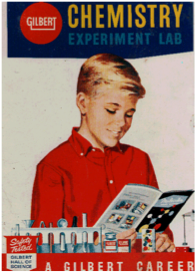
John and I didn’t have any real friends from the neighborhood or school, so that we had to rely on hobbies in those days before television. We built solid model airplanes of balsa wood from kits, painted, sanded and repainted them, and then applied decals for their insignia. Mostly these were World War I biplanes and monoplanes, German, British and American. Then they were hung from the ceiling of our playroom. We also made flying models that were much more complicated to build. The ‘skeleton’ was made of light balsa pieces that were cut out by razor blade from sheets with all the parts printed on them. These were then glued together and subsequently covered with tissue paper. The paper was sprayed with a fine mist of water, which upon drying caused the paper to shrink and to become taught and smooth. Anywhere along the way, disaster could strike, often with irretrievable damage. The propeller was powered by a long, heavy rubber band, which was twisted by turning the propeller in a direction opposite to that for driving the plane. When they worked these model aircraft were sources of great delight as they flew with elegance and beauty over a few hundred yards.
For two weeks in the summer John and I would take the big red tram down to the docks, and hence by boat out to Catalina Island, just off the coast of Los Angeles. Summer camp was always a joy – full of swimming, sports, and games.
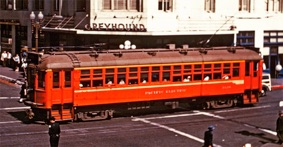
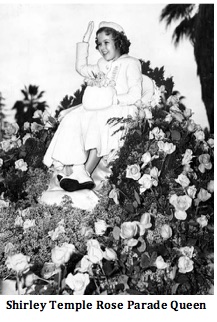
The weather seemed perfect at a time of clear skies, prior to all the pollution that was to foul the Los Angeles valley in later years. But Mother needed to move; so we packed up and headed for Wooster, Ohio.
♣
